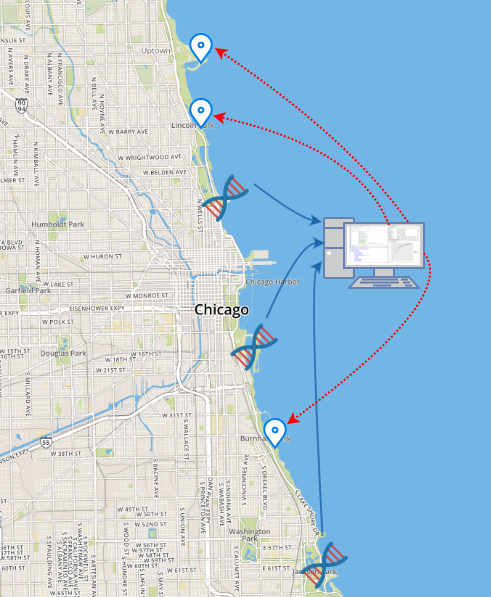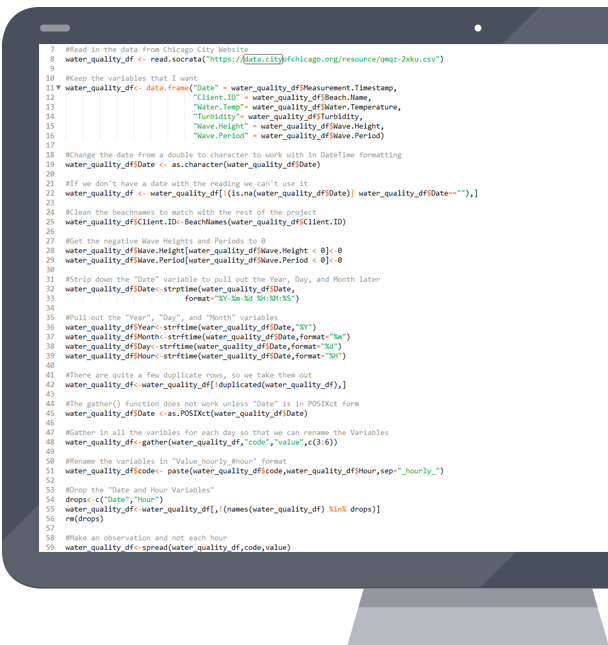Innovative Science
Prior efforts to forecast beach water quality in Chicago and elsewhere have adopted similar approaches. Researchers would collect meteorological data near a swimming site, and then predict contamination levels in the water. However, this methodology can be unreliable and often does not identify days with high E. coli levels.
This project developed a new approach that takes advantage of rapid DNA testing and the lessons learned from data exploration. That approach begins by acknowledging that just five beaches contribute to about 56% of poor water quality beach days. These beaches, which are some of the hardest to predict, should be routinely rapid tested due to their volatility. Water quality patterns at the remaining beaches can then be separated into clusters. In the new approach, one beach from each of these clusters would be rapid tested to get an immediate result. The remaining beaches would be predicted by the model.
A key feature of the new approach is its cost effectiveness. The increased cost of rapid testing would be offset because only half the beaches would be tested. Yet it performs better and provides more accurate notifications to the public.


